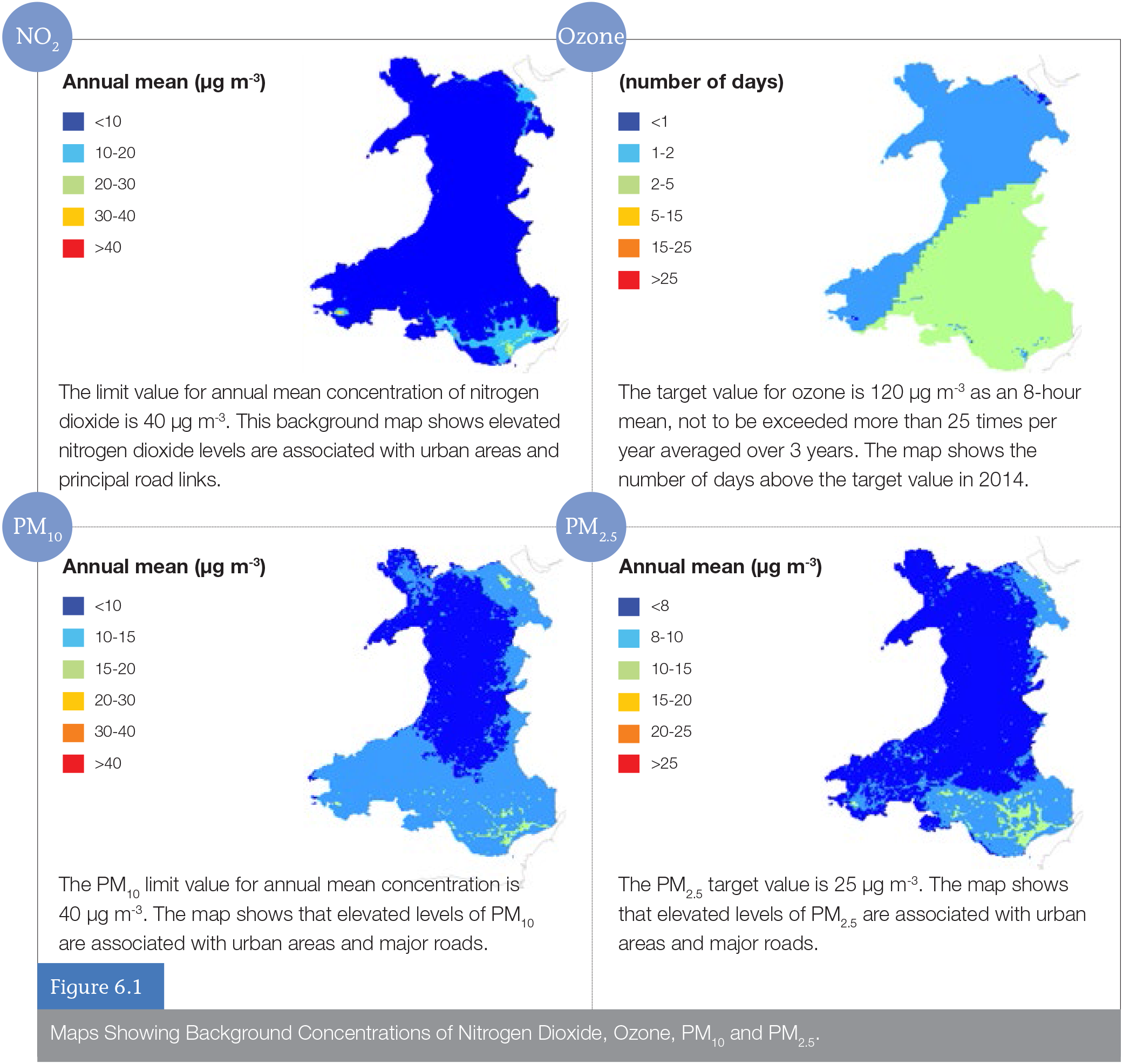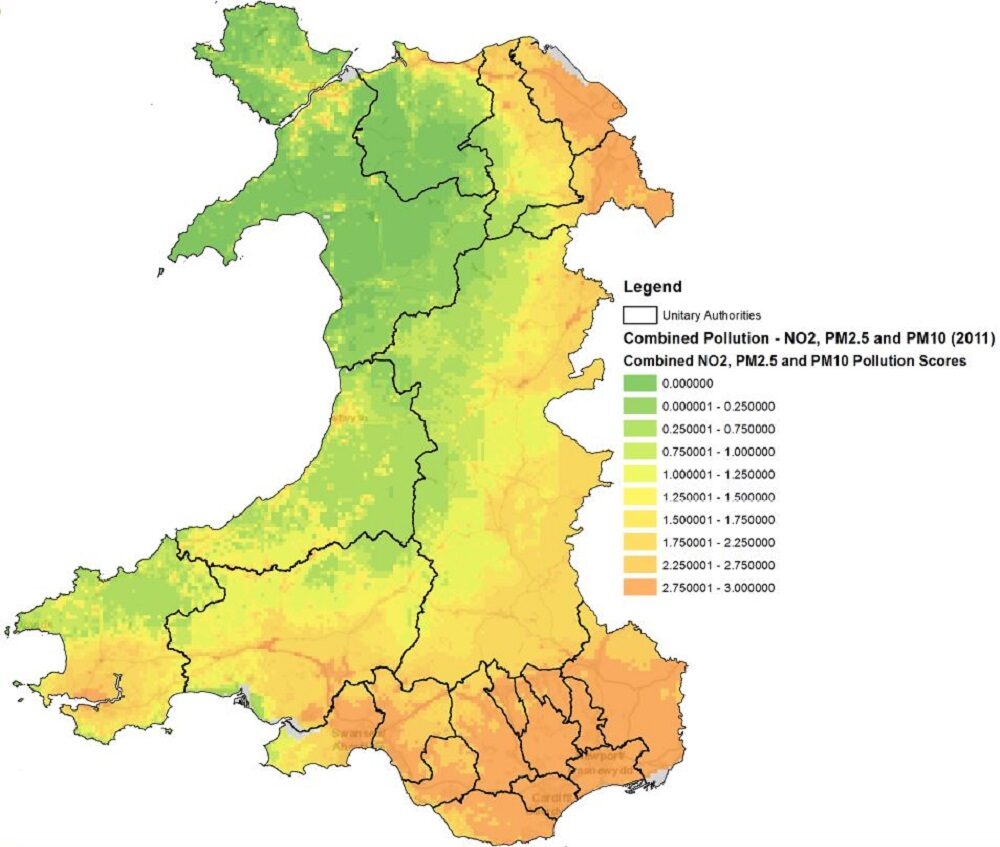Due to its geographical location on the north-western fringes of Europe and the prevailing south-westerly winds experienced for most of the year the air quality in Eryri is generally very good. Occasionally however in settled weather conditions, with high pressure over the UK, easterly winds can bring pollutants from more industrialised areas and as a result the levels of some pollutants can be elevated.
Air quality in Wales can be illustrated using modelled maps of background concentrations of a suite of airborne pollutants. Using dispersion modelling, concentrations from the National Atmospheric Emissions Inventory (NAEI) data are calculated. Model output is calibrated using results obtained from the monitoring networks across Wales with the maps being verified against local authority monitoring data.
The UK’s Air Quality Strategy sets out Air Quality Standard Objectives as minimum or zero risk levels. They are set in relation to scientific and medical evidence on the effects of the particular pollutant on health, or, in the appropriate context, on the wider environment.
Since 1990 there has been a decline in emissions of the seven priority air quality pollutants. The rate of decline particulates (Pm2.5, Pm10) Nitrogen oxides (NOx), non-methane volatile organic compounds (VOCs), sulphur dioxide (SO2) and carbon monoxide (CO) is similar. There has been a much steeper decline in lead (Pb) emissions between 1990 and 2000 due to removal from sale of leaded petrol. Emissions of ammonia (NH3), mainly from agricultural sources, have not declined as quickly as other pollutants.

Source: www.welshairquality.co.uk

Air quality is the leading cause of the environmental burden of disease in Europe. In February 2016 it was reported that 40,000 additional deaths per year are attributable to poor air quality (Royal College of Physicians: Every breath we take), with a health cost of £20 billion per annum.
From the diagram above it is apparent that Air quality in Eryri National Park is very good when compared to areas such as the north or south east of Wales.
NRW regulates emissions to air from larger industrial operations (Part A1 under the Environmental Permitting Regulations (EPR)), such as power stations, refineries and incinerators, to meet the requirements of the Industrial Emissions Directive 2010. Inherent in this is the need to prevent, or minimise, emissions from the sites NRW regulate by applying the national and European standards set to protect health and the environment. NRW are also required to produce an annual Pollution Inventory for emissions. Under the Environment (Wales) Act 2016 NRW also has a duty to report on the state of air quality in Wales as part of the State of Natural Resources Report (SoNaRR) and to consider more local environmental priorities in Area Statements.
Air quality in Wales has improved, with statutory emissions controls and decreasing industrial base leading to a reduction in industrial emissions. However ambient air quality targets for nitrogen dioxide, particulate matter, nickel and polycyclic aromatic hydrocarbons are still being breached in Wales.

